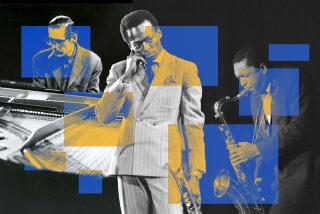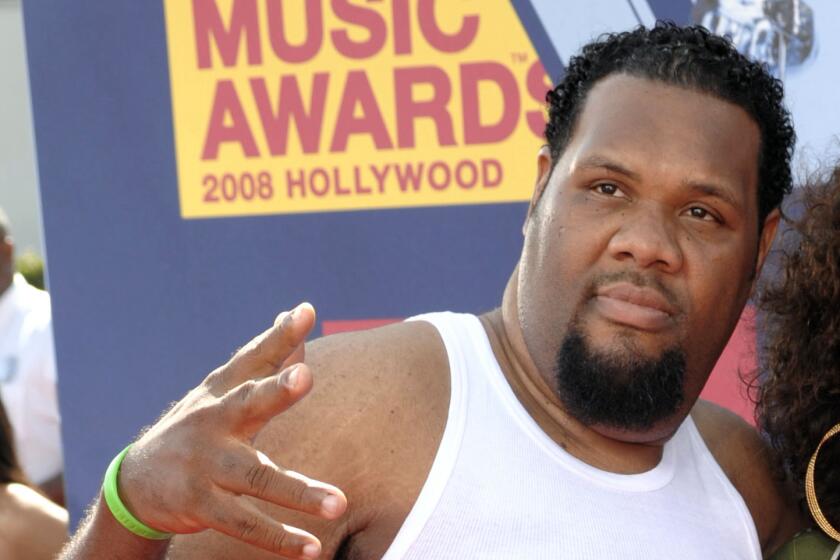BENNY GREEN : A Modern Pianist Finds His Niche in the Big Pond
Benny Green is the prototypical modern jazzman.
For many years, the jazz musician was portrayed by the media as drinking, carousing, smoking everything available and relying on spontaneous creation without recourse to education.
In contrast to that outdated stereotype, the 28-year-old Green is serious about his music and has steeped himself in the history of its evolution. The pianist has no perceptible vices, speaks articulately and is eager to make a personal contribution, both as instrumentalist and composer.
“My father steered me in the right direction,” says Green, a New York resident. “As a tenor sax player himself, he was inspired by Lester Young, and as a teacher he played me records of Monk, Bird, Billie Holiday and taught me the standard jazz repertoire. Along with my classical studies, which I began at the age of 7, I was able to improvise on the tunes I’d heard in his collection.”
As a teen-ager, Green played in high school bands and worked with jazz groups around the Bay Area.
“I free-lanced for a year in San Francisco,” he says, “but when I heard these great musicians from New York visiting the local clubs, I realized that I was only becoming a big fish in a little pond. New York was the mecca where I could feel comfortable in a humbling atmosphere and meet a real challenge.”
At 19 he headed for the big pond, where he soon ran into Walter Bishop Jr., the veteran be-bop pianist who had recorded with Miles Davis and Charlie Parker.
“Walter reminded me of the importance of not just imitating what he was doing and of working toward developing my own voice,” Green recalls.
One night, when he was working with a singer in a Long Island club, Green was heard by Betty Carter. A few weeks later he auditioned for the vocalist, and he went on to build a solid reputation during four years on the road as her accompanist.
“Betty also taught me a lot about not simply emulating pianists I admired,” Green says. “She also told me that regardless of how little exposure audiences might have had to our music, they could sense the underlying feeling behind what we were feeling.”
In 1987, he joined drummer Art Blakey’s Jazz Messengers, earning international respect during his 2 1/2-year stay. He also worked in groups led by Freddie Hubbard, Ralph Moore and Bobby Watson. Now he’s an established leader of his own trio, with two Blue Note albums to his credit. On the latest, “Greens,” he is heard with his current sidemen--Carl Allen on drums and Christian McBride on bass.
Increasingly active as a composer, Green will play many of his compositions on his trio’s next album, which will be recorded live at the Village Vanguard in New York.
“I enjoy the chemistry in this group, and I’m interested in furthering the tradition of the piano-trio format,” Green says of the threesome, which recently completed a five-night stand at Vine St. Bar & Grill in Hollywood.
This is the most remarkable aspect of Green’s work. He regards his trio as a congregation of equals, rather than an individual piano performance with bass and drum backing. Within this framework, he can take the music of such bop pioneers as Blakey, Horace Silver and Charlie Parker and update them beyond their status as archival figures, bringing them to contemporary life through his unusually sensitive use of the format at his disposal.
While working with some of the greats has elevated Green to the upper echelons of jazz, he nevertheless remains grounded in assessing his own potential.
“All I had to do when I first got to New York was go around to the jazz clubs and hear some of the true masters playing,” Green explains. “That really put me in my place--but it also inspired me to keep on pushing ahead.
“I have to go beyond the accomplishments of the great people I’ve listened to, and I realize that it’s going to take a lifetime of work.”
More to Read
The biggest entertainment stories
Get our big stories about Hollywood, film, television, music, arts, culture and more right in your inbox as soon as they publish.
You may occasionally receive promotional content from the Los Angeles Times.










